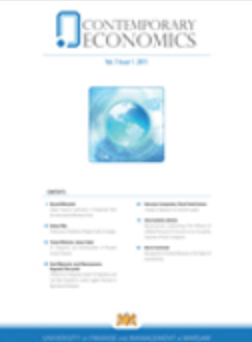Can Monetary Policy drive economic growth? Empirical evidence from Tanzania
Can Monetary Policy drive economic growth? Empirical evidence from Tanzania
Author(s): Enock Nyorekwa TwinoburyoSubject(s): Evaluation research, Economic development, Post-War period (1950 - 1989), Transformation Period (1990 - 2010), Present Times (2010 - today), Financial Markets
Published by: VIZJA University
Keywords: Monetary policy; economic growth; interest rate; money supply;
Summary/Abstract: The role of monetary policy in promoting economic growth remains empirically an open research question. This paper attempts to bridge the knowledge gap by investigating the impact of monetary policy on economic growth in Tanzania during the period from 1975 to 2013, using the autoregressive distributed lag (ARDL) bounds-testing approach. To our knowledge, this study may be the first of its kind to examine in detail this nexus in Tanzania. The study uses two proxies of monetary policy, namely, money supply and interest rate, to examine this linkage. The empirical results of this study reveal no impact of monetary policy on economic growth in the long term – irrespective of the proxy used to measure monetary policy. However, the short-term results confirm the existence of monetary policy neutrality – but only when the interest rate is used as a proxy for monetary policy. When money supply is used to measure monetary policy, a negative relationship between monetary policy and economic growth is found to predominate. The study findings suggest that monetary policy may not be a panacea for economic growth in Tanzania.
Journal: Contemporary Economics
- Issue Year: 12/2018
- Issue No: 2
- Page Range: 207-221
- Page Count: 15
- Language: English

